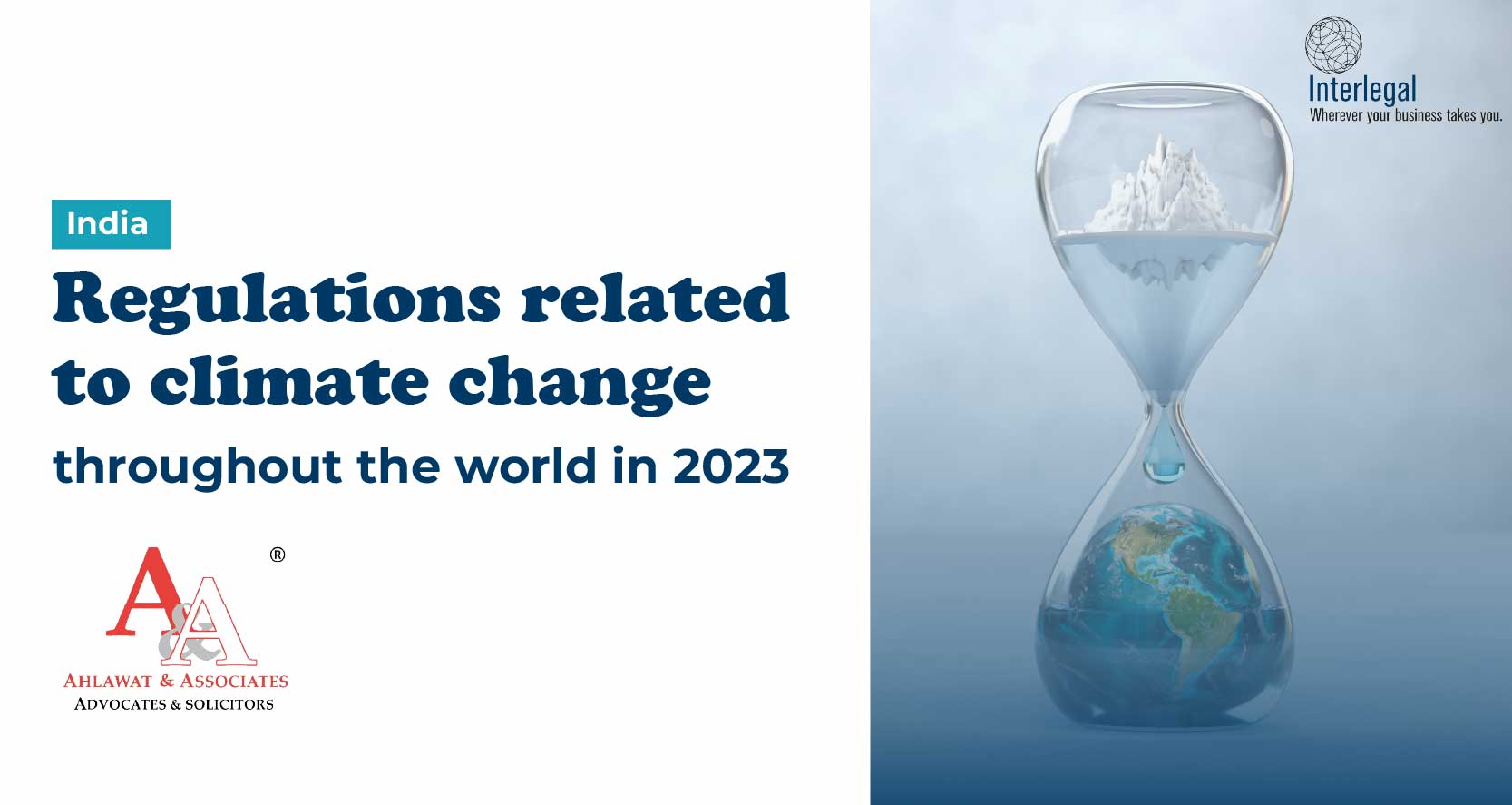Shreyika Walia, an advocate at Ahlawat and Associates, provides valuable insights on India’s environmental governance and regulatory landscape in the face of climate change. Her write-up highlights key initiatives, such as the role of regulatory authorities, the establishment of the National Green Tribunal, updates to the Nationally Determined Contribution, and the formation of alliances like the International Solar Alliance and Coalition for Disaster Resilient Infrastructure.
Climate change is one of the major environmental challenges that nations, including India, must grapple with. Environmental regulatory authorities in India ensure a nationally regulated and state-coordinated approach to environmental governance.
The Ministry of Forest, Environment and Climate Change along with the Central Pollution Control Board (CPCB) and State Pollution Control Boards (SPCB) constitute the sector’s core. It fosters protection and improvement of the quality of the environment by preventing and abating environmental pollution.
In addition, the National Green Tribunal Act, 2010 provides for the establishment of the National Green Tribunal (NGT) for the resolution of environmental matters. The NGT ensures vigorous enforcement of the Comprehensive Environmental Pollution Index (CEPI) via the CPCB and SPCBs. The CEPI allocates weight to numerous contaminants, ambient pollutant concentrations, and other high-risk rudiments.
The Indian Energy Conservation Act, 2001 by way of an amendment in 2022 included concepts like mandated use of non-fossil sources and carbon credit trading to ensure faster decarbonization. This amendment aids sustainable development and was introduced in line with the Paris Agreement and various other actions related to climate change.
In November 2022, the Indian Ministry of Finance released guidelines for sovereign green bonds with the intent to utilize such bonds for financing or refinancing authorized green projects, such as clean transportation, renewable energy (solar, wind, biomass, and hydropower), and pollution prevention and control.
India recently updated its Nationally Determined Contribution (NDC) in August 2022 in order to comply with the targets set at the 26th United Nations Climate Change Conference (COP26) to transition to renewable energy sources and to achieve India’s goal of net zero emissions by 2070.
With the revision to the NDC, India now has a significantly determined goal to reach a cumulative installed capacity of non-fossil fuel-based energy resources of roughly 50% and reduce the GDP’s carbon intensity by 45 percent by 2030.
The Indian National Adaptation Fund for Climate Change was formed to aid with adaptation efforts in States and Union Territories of India that are susceptible to the negative effects of climate change. India reduced its GDP’s emission intensity by 24% between 2005 and 2016, owing to the various steps that were implemented.
In addition to resolutely addressing climate change domestically, India has established worldwide alliances like the International Solar Alliance (ISA) to ensure increased deployment of solar energy technologies as a means for bringing energy access and ensuring energy security. India also launched the Coalition for Disaster Resilient Infrastructure (CDRI) with the aim to increase the resilience of infrastructure systems to climate and disaster risks.
In conclusion, her insight underscores India’s proactive approach to addressing climate change through robust environmental governance and regulatory measures. These efforts demonstrate India’s commitment to combating climate change and fostering environmental protection for the benefit of present and future generations.
Andre Lucas Durigan Sardinha, from Miguel Neto Advogados, provides valuable insights on the global impact of climate change and the outcomes of COP 27, the United Nations Conference on Climate Change held in Sharm El Sheik, Egypt. His analysis highlights the creation of a fund to assist vulnerable countries affected by catastrophic weather events.
